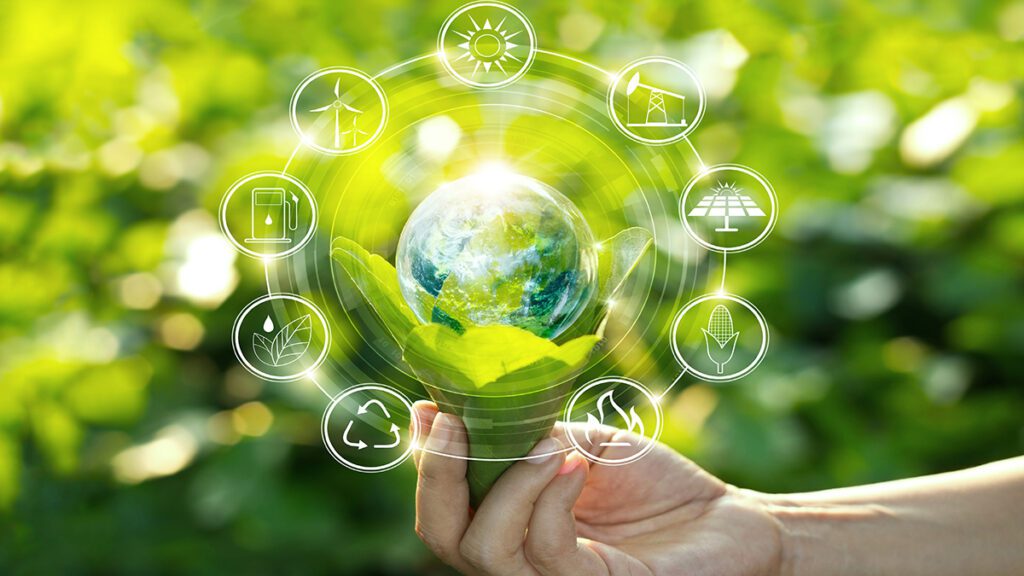As the world strives to combat climate change and protect the planet for future generations, sustainable technology is offering powerful solutions. Advances in renewable energy, energy storage, transportation, agriculture, and circular economy are transforming the way we live and work. This article explores ten sustainable tech solutions that can create a significant impact. From solar and wind power to electric vehicles, smart grids, and sustainable materials, technology is making it possible to build a greener future. However, while technology is essential, behavioral changes and effective policies are also necessary to achieve lasting sustainability. Combining technology with practical solutions can help us create a brighter and more sustainable world.
10 Sustainable Tech Solutions for a Greener Future
The world is facing a daunting challenge as we try to combat climate change and preserve the planet for future generations. Technology is a powerful tool that can help us achieve our sustainability goals. Advances in renewable energy, energy storage, transportation, and agriculture, among others, are making it possible to build a more sustainable future. In this article, we will explore ten sustainable tech solutions that can make a significant impact.
1. Solar Power
Solar power has become one of the most popular forms of renewable energy. Solar panels convert sunlight into electricity without emitting greenhouse gases. They can be installed on roofs, ground-mounted, or even integrated into building materials like windows and shingles. Solar energy is almost limitless, as the sun will continue to shine for billions of years.
2. Wind Power
Wind power is another popular form of renewable energy. Wind turbines can be used on land or offshore to generate electricity without emitting greenhouse gases. Wind farms can be developed at scale to supply energy to entire communities. Wind power is a relatively stable and predictable source of electricity, and advances in technology have made it more efficient and affordable.
3. Energy Storage
One of the biggest challenges with renewable energy is that it is intermittent. The sun doesn’t always shine, and the wind doesn’t always blow. Energy storage solutions like batteries and pumped hydro storage can help mitigate this issue. They allow excess energy to be stored and used when demand is high. Advances in energy storage technology are making it more affordable and accessible.
4. Electric Vehicles
Electric vehicles (EVs) are becoming increasingly popular as an alternative to fossil fuel-powered cars. EVs emit no tailpipe emissions, and they are much more energy-efficient than gasoline-powered vehicles. Advances in battery technology are increasing the range of EVs, and the development of charging infrastructure is making them more practical for long-distance travel.
5. Smart Grids
Smart grids are modernizing the way we generate, distribute, and use electricity. They use advanced sensors, communication, and analytics to optimize the performance of the grid. Smart grids can integrate renewable energy sources, energy storage, and electric vehicles to increase efficiency and reduce emissions.
6. Sustainable Agriculture
Agriculture is a significant source of greenhouse gas emissions. Sustainable agriculture practices can help reduce emissions while increasing crop yields. Precision agriculture technologies like precision fertilization, precision irrigation, and precision planting can help farmers optimize their use of resources and reduce their impact on the environment.
7. Green Buildings
The construction and operation of buildings are responsible for a large portion of global emissions. Green buildings use sustainable construction practices, energy-efficient design, and renewable energy sources to reduce their impact. Advances in smart building technology are making it easier to monitor and optimize energy use in buildings.
8. Circular Economy
A circular economy is one in which waste is minimized, and resources are kept in use for as long as possible. This requires a shift away from the linear “take-make-use-dispose” model of consumption to one that prioritizes reuse, repair, and recycling. Sustainable tech solutions like 3D printing, e-waste recycling, and product life extension technologies can help facilitate this shift.
9. Carbon Capture and Storage
Carbon capture and storage (CCS) technologies can capture and store carbon dioxide emissions from industrial processes and power plants. This can help reduce emissions from some of the most significant sources. Advances in CCS technology are making it more cost-effective and accessible.
10. Sustainable Materials
Many products are made from unsustainable materials like plastic, which can take centuries to degrade. Sustainable materials like bioplastics, bamboo, and mycelium can offer more environmentally friendly alternatives. Advances in materials science are making it easier to develop sustainable materials that can replace conventional ones.
Conclusion
The ten sustainable tech solutions discussed in this article offer a glimpse into the future of a more sustainable world. These technologies can help us reduce our impact on the environment while promoting economic growth and prosperity. However, they are not a silver bullet, and we must also make significant changes in our behaviors and societal systems. Combining sustainable tech solutions with effective policies and practices can help us build a greener future for all.
